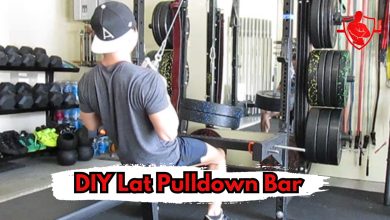Shock the Muscle Myth: Is It Really a Myth? What Is The Science Behind It?
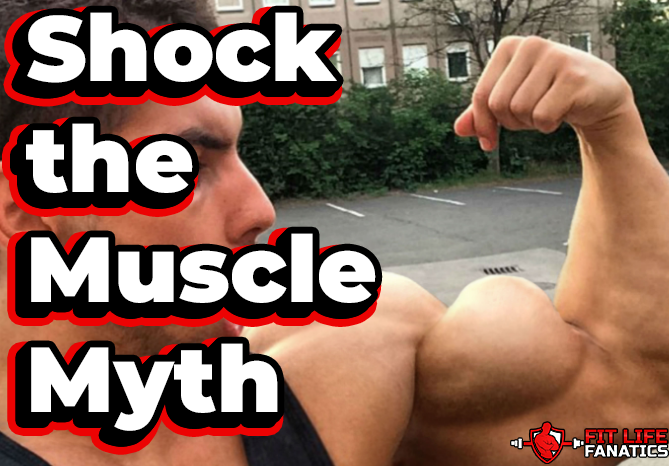
Ask any bodybuilding lover out there, and most of them will tell you they definitely dream about being able to bulk up overnight and look like a greek god when they wake up.
Even so, the journey to transitioning from skinny arms to sleeve-ripping ones and sporting those Arnold Schwarzeneger's sculpted bouncy pecs is a long and grueling one.
It takes time, sweat, blood, and tears to get there.
I know, I know, you have tried just about everything to gain bigger and stronger muscles, and now you’re considering giving this ‘shock your muscles’ thing a try.
You gotta shock those muscles bro! They tell you at the gym. But….
Does this technique work? If so, what about it does and what doesn’t? Can you get any results by shocking your muscles, or is it just a myth that you should take with a pinch of salt?
Tag along as we drill in to the low down of what muscle shocking is all about, how it works, and whether it’s worth your time.
What Does It Mean to Shock the Muscle?

This might sound confusing, I know, but the truth is, it doesn’t have to.
There may be confusion among gym enthusiasts, when it comes to the concepts of "shocking the muscle" and programs such as Tactical Barbell, CrossFit, and Gym Jones. It is crucial to understand that each approach has its own distinct goals and methodologies.
To put it simply, shocking muscles can be done with the use of exercise or Electrical Muscle Shock (EMS).
Whichever option you choose comes with its advantages and downsides. But the most important thing is that you are putting a stimulus on your muscles to get the desired results.
We will dig into each type in this post, so stay with me, especially for those of you who are new to this sort of thing.
**Do note; if done wrong, shocking your muscles can do more harm than good. So you must stick to the shocking principles if you are to rip the benefits and be safe.
Can You Actually Shock Your Muscles?

Yes, you can! But that’s the short answer. The long answer is that whether you should embrace this approach or not depends on several factors. We will get into that in a moment.
The thing is, muscle shock makes for an excellent technique to build stamina and endurance as well as burn fat. This, of course, boils down to how well you will master the art of shocking your muscles, and whether you’re doing it at the right time.
So, can you shock muscles into growth? Well, while this approach might not give you the kind of results you are envisioning in your mind, it does work. Research has proven that muscle shock can increase one’s strength, provided you combine it with sets of regular weightlifting (1,2).
However, if you are looking to build chunks of muscles that will get every bodybuilder asking you how you do it, shocking isn’t going to be a magic bullet.
How Do You Shock Surprise Your Muscles?

You can shock different muscles depending on what you want to target, or the part you want to grow. Either of the options we have discussed in this article should work just fine. I prefer using exercise to shock my muscles if I feel like I’m hitting a plateau. But the choice is all yours really, any of these should be just as effective provided you use them right.
We will look at three muscles you can target with this approach and the kind of exercises you need for each.
How Do You Shock Your Biceps to Grow?

What better muscle to start with than the biceps - the one muscle that gives you that indomitable beastly look? If you are aiming to bring your biceps out at their finest, here are several exercises for you.
Rest-Pause Sets

This one is all about volume. You will need to perform several lifting reps, and then rack the weight for around 15 seconds, and then continue lifting. You will need to rinse and repeat this for several sets. What makes this training so effective for those looking to hit massive gains is that you achieve fatigue while still allowing you to do more reps.
But before you jump head over heels into it, keep in mind that the secret to avoiding injury is to ease your way in, say keep it at one to two sessions per week, then ramp it up. Pick one exercise for a start, provided it’s a heavy hitter, something like chest press, bench press or back squats should do. Also, make sure to do enough warm-up exercises before getting started with your reps.
Time Under Tension
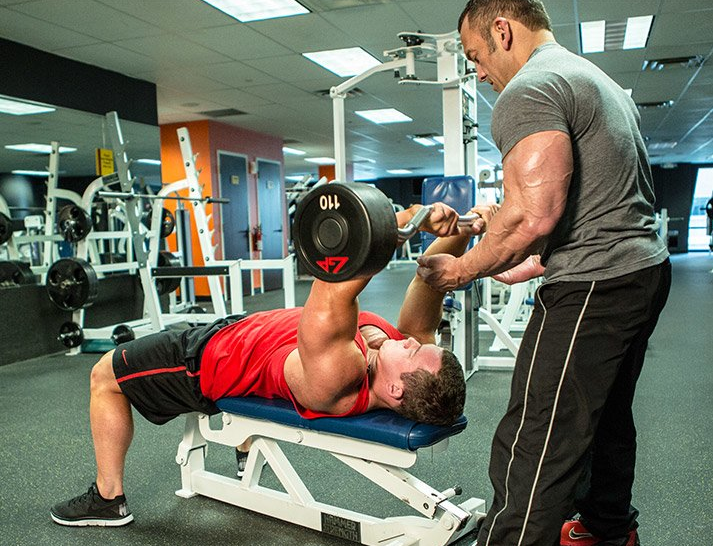
Y’all have seen those gym bros who burst through a dozen reps as if they are on juice, right? Yeah, I know, it looks cool AF. I hate to be the party pooper, but sometimes, that’s just not the way to go. If you want the best for your muscles, then factor in the tempo of your exercise, and monitor the time you put in to complete those reps you have in mind.
For those looking to prod their muscles into growth, time under tension sort of training comes in super handy.
For a start, aim at hitting around 25-30 seconds for each set, and keep each rep at around three or four seconds. The goal should be to hit around eight to ten reps with each set. You may lose track of time when at it, so it helps to have someone time you throughout the set. Once each set is done, you can rest for about 60 to 90 seconds and then jump right back.
Pull Off Some Negatives

Every lifter worth his salt will tell you a lift comprises three essential phases, the muscle shortening one (aka concentric contraction – when lifting) the momentary pause in between (the isometric contraction –at the top of the move), and then there's muscle lengthening (eccentric contraction – when lowering). (3)
The idea behind negatives is that you shred your muscles more when lowering the weight slowly as compared to when lifting. Do note the “slowly” part, because it’s easy to get lost in the moment and let gravity trick you into letting the load drop.
By working against gravity when lowering the load in a controlled manner, you cause more fatigue and muscle tear, which spurts growth and eventually, impressive muscle gains.
There’s one catch though, negatives can get intense, leaving you sore for the next couple of days. So yeah, ease your way into this one too, preferably with only a single or two exercises. Keep the reps at around five, keeping the time you lower the weight at around five or six seconds before lifting it. It does help to have a spotter who can help track the time for you.
How to Shock Your Chest Muscles?

To build a bouncy chest, will need the following exercises, which, like the ones above, are aimed at giving you the most natural muscle shock you can get.
Drop Sets
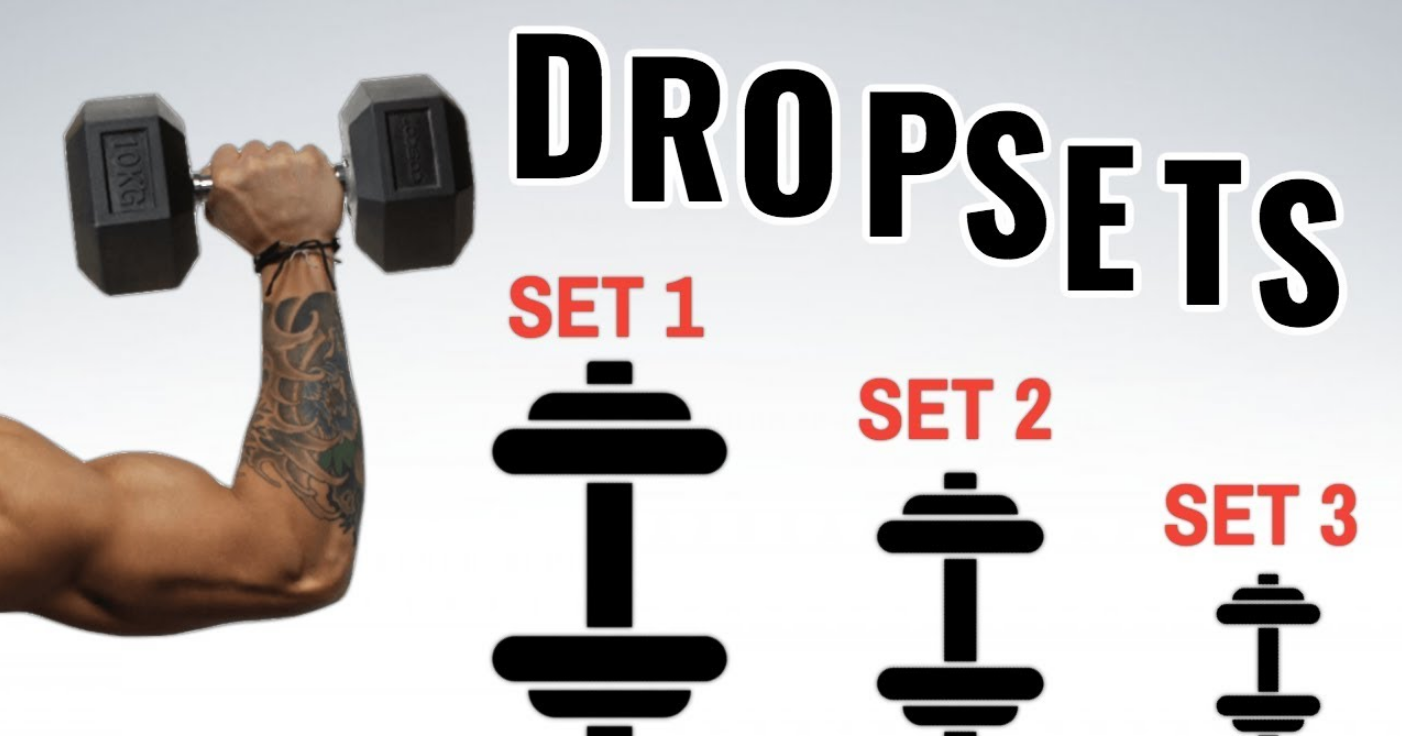
These are aimed at giving your muscles the best mechanical advantage possible. Take for instance, when doing pull-ups. The wide-grip pull-up is sure to be way harder than a neutral grip pull up. So by starting with the easier close grip, and advancing to the more difficult wide grip as fatigue sets in, you will plunge your muscles into utter exhaustion.
Mechanical advantage drop sets are best done towards the end of your workout routine. To make it as effective as it can get, aim to start with a wide grip. Step on the gas to almost failure, or utter failure if you wish, then jump straight into a parallel grip (the palms should face each other here) and keep going, then switch to chin-ups and get in some more reps.
The idea is to shoot for around three reps minimum for each grip type.
Complexes
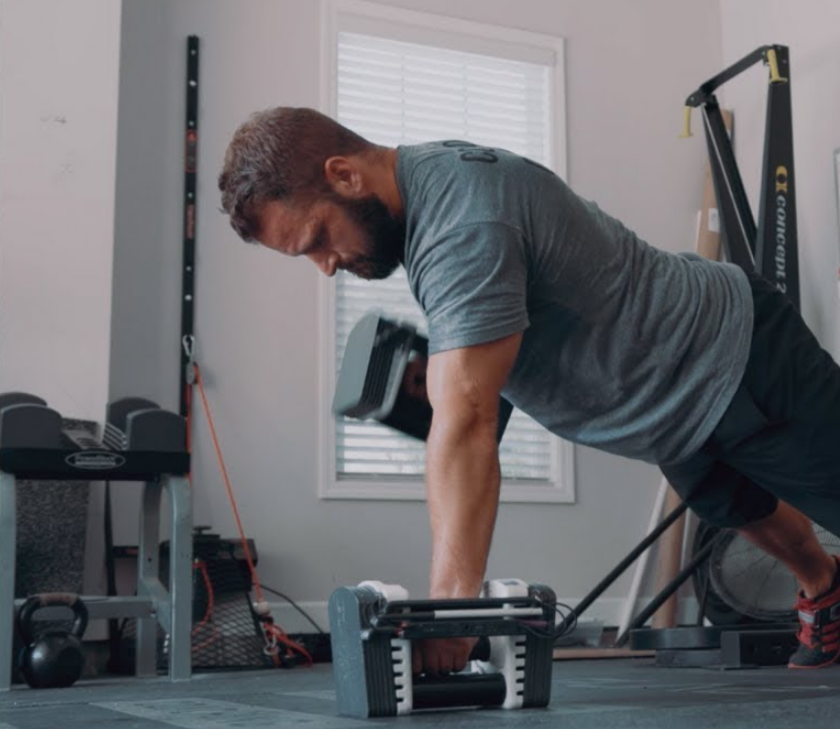
While supersets make for a perfect approach to bumping up the intensity and draining your muscles to fatigue, complexes take things a notch higher. With complexes, the idea is to burst through three to four exercises straight to compound the fatigue on your target muscle – like the chest muscles in our case.
- Give the following exercises a go and see how tough it gets.
- Power exercise (Eg. Clapping push-ups) - Go for 3 to 5 reps
- Strength exercise (Eg. Dumbbell floor press) – Hit 6 - 8 reps
- Isolation exercise (Eg. Dumbell pullover) – Hit 8 – 12 reps
- Bodyweight fatigue exercise (Eg. Close grip push-up) – Aim for as many reps as you can
This complex burns through your power, strength, as well as hypertrophy ranges, leaving you writhing on the floor, but at the same time setting the stage for gargantuan potential for muscle growth. The idea is to keep the tempo high with fast and explosive moves during those power exercises to initiate your high threshold motor units and activate the fast twitch fibers in your muscles.
How Do You Shock Your Legs?

For the legs, you will need one of the exercises we’ve discussed above in the biceps section – drop sets. You should start with a certain weight and go for as many reps as possible. Upon hitting failure, drop some of the weight and go for another set until you reach failure. Then drop some more and make another go…
The good thing with this sort of exercise is that you can use it for different body parts, including the legs.
Here are some exercises you can give a try:
Squats
Leg extensions or alternatives
Leg curls
Again, remember to start slow and ante up on the tempo as you go. Preferably, start with one drop set and keep at it until you’re comfortable enough with it before adding a few more. Also, it’s important to have a spotter and be sure to avoid overdoing to avoid injuries.
Electrical Muscle Stimulation (EMS)
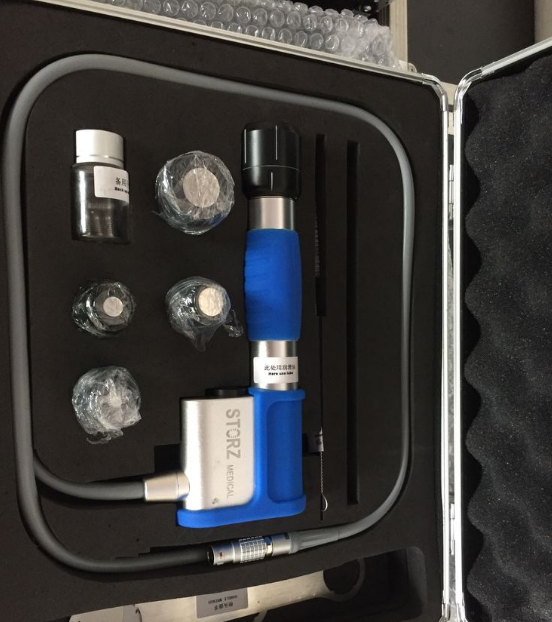
Now that we’ve looked at some cool exercises to shock your muscles, let’s jump over and look at the technological options at your disposal. This is pretty much the use of EMS. Also known as neuromuscular electrical stimulation, EMS has been used by bodybuilders before, and it’s still in use. But is it worth it? Let’s find out.
Does Ems Actually Work?
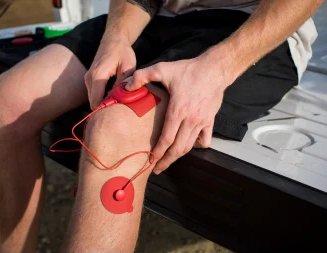
Yes, EMS does work. I won’t go into all the science behind it, but at the very basic level, this approach initiates muscle contraction with the use of direct application of electrical impulses to stimulate the motor neurons.
So, is electric shock good for muscles? It sure is. But to get the most out of this, you need to combine it with regular weightlifting. This way, you will be able to gain muscle (might be faster than with weightlifting alone, but don’t expect overnight transformation) and strength.
Is Ems Harmful?

As handy as it is, EMS can be harmful – if not used correctly. Some of the risks we’re looking at here include muscle damage. Experts say this can lead to muscle particles breaking off, getting into your bloodstream, and ending up in the kidneys.
How long should you use electrical muscle stimulation?
Keep in mind that you need to be conscious of how long you use EMS since each one has limitations depending on your desired results or the type of e-stim you’re using. You should be fine using electrical muscle stimulation for anywhere between 5 and 30 minutes, but you should also consult with your trainer first.
How Often Should You Shock Your Muscles?

Just keep the routing within one to two months. What you should be aiming at here is more of increasing the intensity of your training every two weeks or so. Here’s the thing, muscle shocking isn’t cut out to grow your muscles, it’s more of a supplement to your workout regimen. So yeah, don’t use this as an excuse to become lazy and expect results, keep pushing yourself hard.
Can I Use Ems Every Day?

That isn’t the way to go. I know, you might feel hard-pressed to make something work and get those muscles back on, but using EMS every day isn’t going to give you results overnight.
You should only use this treatment once or twice every week to give your muscles time to recover.
The recovery time needed might differ from one person to another, but it could be anywhere from a few days to a few weeks for some.
Do Bodybuilders Use Ems?

Yes, they do. EMS is more widely used than you might think. And not just by upcoming lifters struggling to make their muscles visible, but also by pro athletes and bodybuilders.
However, the secret here is that these seasoned gym rats use this as a way of supplementing their overall training. Mostly, EMS is used to exhaust the muscles and speed up recuperation for max gains.
What Are the Side Effects of Ems Training?

Luckily, as long as you’re healthy and do it right, the chances of any side effects are very slim. The only problem that you are likely to run into with the use of this kind of training is if you use it incorrectly.
We have already mentioned above what this could mean – muscle damage, and in extreme cases, it could even affect the kidneys as well.
Who Cannot Use Ems?

One thing you need to keep in mind is that this isn’t a magic bullet to building bulging blocks of muscle overnight or building muscle from scratch.
You should use this training as part of your workout routine, more so if you have hit a plateau and want to prod your muscles to begin the next phase of growth.
So for beginner lifters and bodybuilders out there, I would say take your time first, do not rush into EMS.
Muscle Shock Injuries – Do They Occur?

Sometimes, yes. But here’s the bright part. You run a higher chance of sustaining an injury during your daily lifting than when doing the muscle shock treatment.
As we have mentioned above, there’s a chance something could go wrong, leading to muscle damage. However, as long as you know what you’re doing, the chances of this happening are virtually non-existent.
What Are People’s Experiences of This Training Strategy on Reddit?
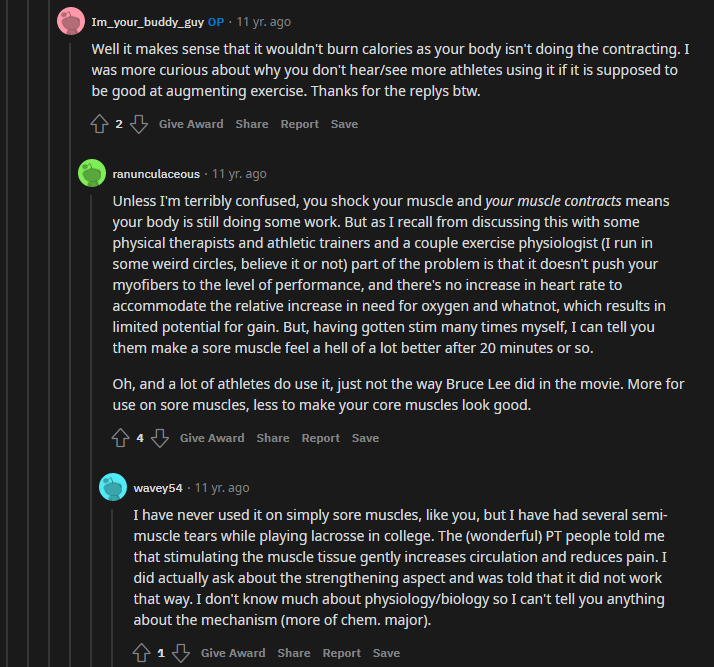
When my gym buddy brought up the concept of muscle shocking, I set out to do a digging of my own. In my spiral down the rabbit hole, I ended up on this reddit thread. Turns out the whole idea of muscle shocking is piquing the interest of many there but also arousing one heck of a debate.
In the blue corner are those who believe that shocking your muscles (especially with EMS) does work, and in the red corner are those who think the exercise part of it is nothing more than progressive overload.
I decided not to take sides, so I just went ahead and grabbed what I needed. I suggest you can give both options a try and see what works for you.
To Wrap It Up
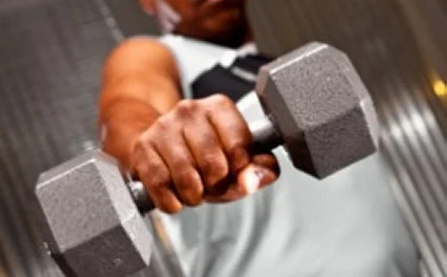
It’s clear that whether you go the exercise way, or use EMS, you should achieve a certain degree of results depending on how dedicated you are and how well you do your training.
Is muscle shocking the real deal or is it nothing more than just hype? Shocking the muscle does work. However, you need to get it right and use it with a regular workout routine to reap the benefits.
Related Readings:
- Shocking Muscle Growth Stories that Will Blow Your Mind
- 11 Best Home Gyms for Bodybuilding – With & Without Weights – Reviewed
- Is Training Shoulders After Chest Day Beneficial OR Overtraining?
- How Can I Get Bigger Hands? My Personal Strategies & Tips
- How to Build Core Strength from Nothing
- Weider Ultimate Body Works Exercises
References:
- https://www.frontiersin.org/articles/10.3389/fphys.2021.640657/full
- https://www.ncbi.nlm.nih.gov/pmc/articles/PMC7563530/
- https://www.ncbi.nlm.nih.gov/pmc/articles/PMC3899915/#:~:text=In%20a%20concentric%20contraction%2C%20the,force%20the%20muscle%20is%20producing
- https://www.mensjournal.com/health-fitness/5-muscle-shocking-methods-you-forgot-all-about/
- https://www.bodybuilding.com/fun/phano81.htm
- https://pubmed.ncbi.nlm.nih.gov/22067247/
- https://www.reddit.com/r/Fitness/comments/6ahu0u/ive_been_told_i_need_to_shock_my_muscles_every_4/
Ben Mayz
Hi there! I'm Ben, main author and chief editor at Fitlifefanatics.com. I have been obsessed with Strength Training and Fitness for 18 years now.
My passion for living a happy fit lifestyle is what made me realize that fitness is what I wanted for my future.
I went on to earn my Masters in Sports Training & Biomechanics.
My passion for Strength training & fitness and my love of helping others is what made me start Fitlifefanatics.
Here, myself, and a team of specialist aim to provide the most accurate, and actionable information possible in hopes to help foster the fitness community forward.
You can learn more about Fitlifefanatics on our About Page









